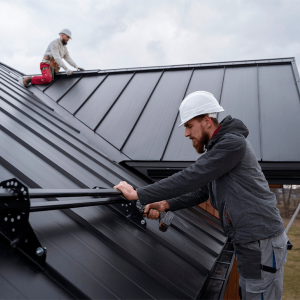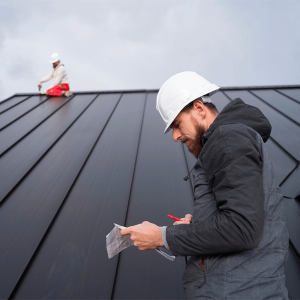
In the world of rainwater management and home maintenance, gutter guard installation plays a crucial role. As experts with years of experience in the field, we understand the importance of accurate installation to ensure maximum protection and efficiency of your gutters.
In this blog, we will share our accumulated knowledge and best practices to guide you through every step of the gutter guard installation process. From selecting the right material to advanced installation techniques, we’ll cover all the essentials to help homeowners and professionals achieve optimal, long-lasting results.
What is the main function of the gutter guard?

The primary function of a gutter guard is to prevent leaves, branches and other debris from clogging a home’s gutters. These types of obstructions can lead to a variety of problems, such as water overflows, damage to the roof structure and the formation of puddles around the home’s foundation.
Installing gutter guards ensures a steady, unimpeded flow of water, which is vital to maintaining the integrity and functionality of the roof drainage system. In addition, the guards significantly reduce the need for frequent gutter cleaning and maintenance, which saves homeowners time and effort in the long run.
How to choose the right gutter guard?

When considering the installation of a gutter guard, it is essential to understand that not all guards are suitable for every home. The right choice depends on several factors, including the type of roof, the climate of the area, and the type of surrounding foliage.
An efficient gutter guard should be able to withstand the local weather conditions, whether it be heavy rain, snow, or strong winds. Additionally, compatibility with the type of roof is crucial; some guards are better suited for sloped roofs, while others are designed for flatter structures.
The gutter guard installation also involves considering the material it is made of. Aluminum guards, for example, offer durability and resistance to corrosion, while plastic ones may be more economical but less durable. It is also important to consider the size and design of the guard’s openings, as this will determine its effectiveness in blocking debris like leaves, branches, and other residues, while still allowing water flow.
Aesthetics also play a role in choosing the right guard. Although functionality is paramount, choosing a design and color that complements the style of your home can enhance its overall appearance.
Finally, although gutter guard installation can be a DIY project, considering the help of professionals can ensure a safe and effective installation, ensuring that your gutter system operates optimally for years.
Key tips for gutter guard installation

- Proper Preparation: Before starting the installation, it is essential to clean and inspect the gutters to ensure they are free from leaves, debris, and damage. This cleaning ensures that the gutter guard fits correctly and functions efficiently.
- Accurate Measurement: Before purchasing gutter guards, carefully measure the total length of your gutters. This will ensure that you buy the right amount of material and avoid waste.
- Tools and Safety: Make sure you have all the necessary tools on hand before starting, such as ladders, gloves, and cutting tools. Safety is paramount, so you should use personal protective equipment and make sure the ladder is securely placed.
- Proper Installation: Follow the manufacturer’s instructions carefully to install the gutter guards. Many guards snap or screw directly onto the gutters, making the installation relatively straightforward.
- Post-Installation Maintenance: Although gutter guards reduce the need for cleaning, it is important to perform regular inspections and clean the guards as needed to ensure optimal operation.
- Environmental Considerations: If you live in an area with lots of leaves, snow, or heavy rain, consider gutter guards that are designed to handle these conditions.
Conclusion
In summary, proper gutter guard installation is crucial to ensuring the durability and efficiency of your drainage system. By following expert advice, you can ensure that your investment will provide long-lasting protection and optimal performance, avoiding costly problems in the future.

